Abstract
Para-nitrophenyl glycerin (PNPG) was shown to be an effective agent to abolish the swarming of Proteus mirabilis and Proteus vulgaris on predried solid culture media. The level required to abolish swarming varied with the strain of Proteus, the components of the medium, and also with the conditions of incubation. Generally 0.1 to 0.2 mM PNPG effectively abolished swarming for at least 24 h with aerobic incubation. Levels of PNPG that abolished swarming showed no effect upon the growth of the cells, little or no effect upon the motility characteristics of the organisms, and no effect upon the cellular morphology. PNPG was found to be freely water soluble, stable to autoclaving, and to retain biological activity for at least one month in prepared culture media stored under refrigeration.
Full text
PDF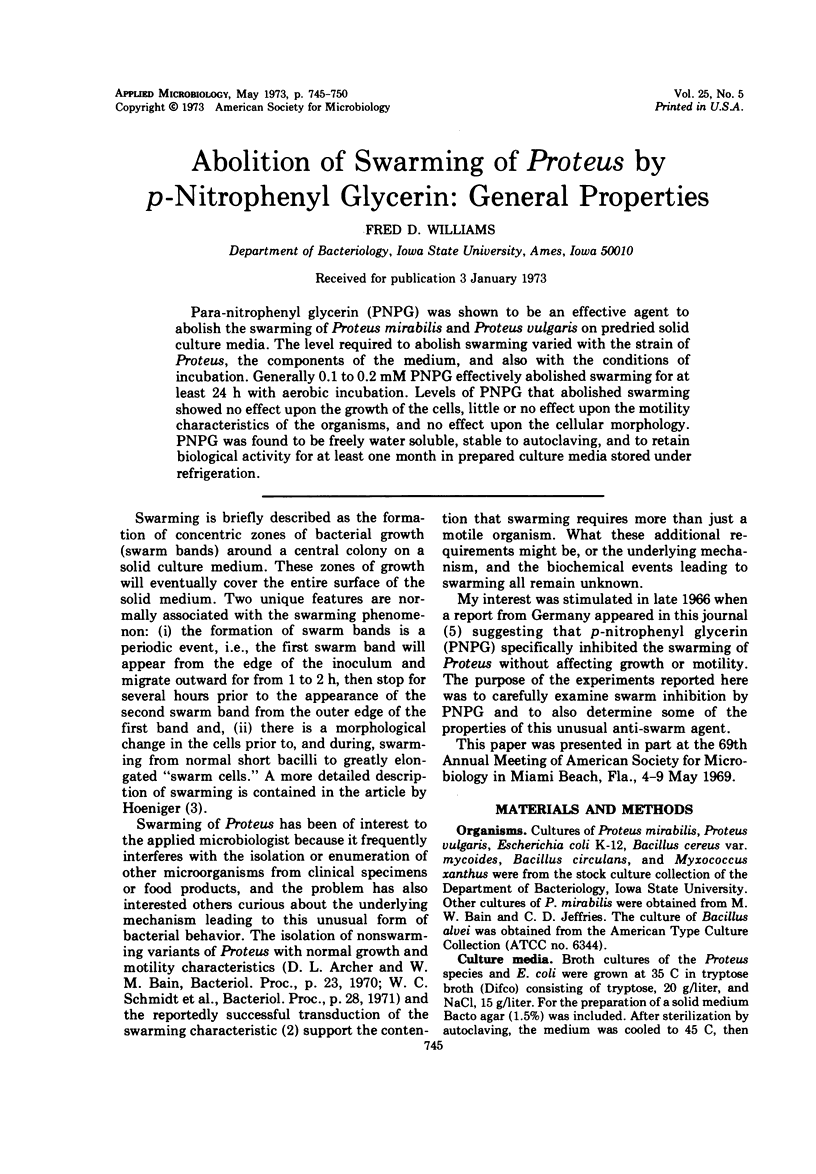
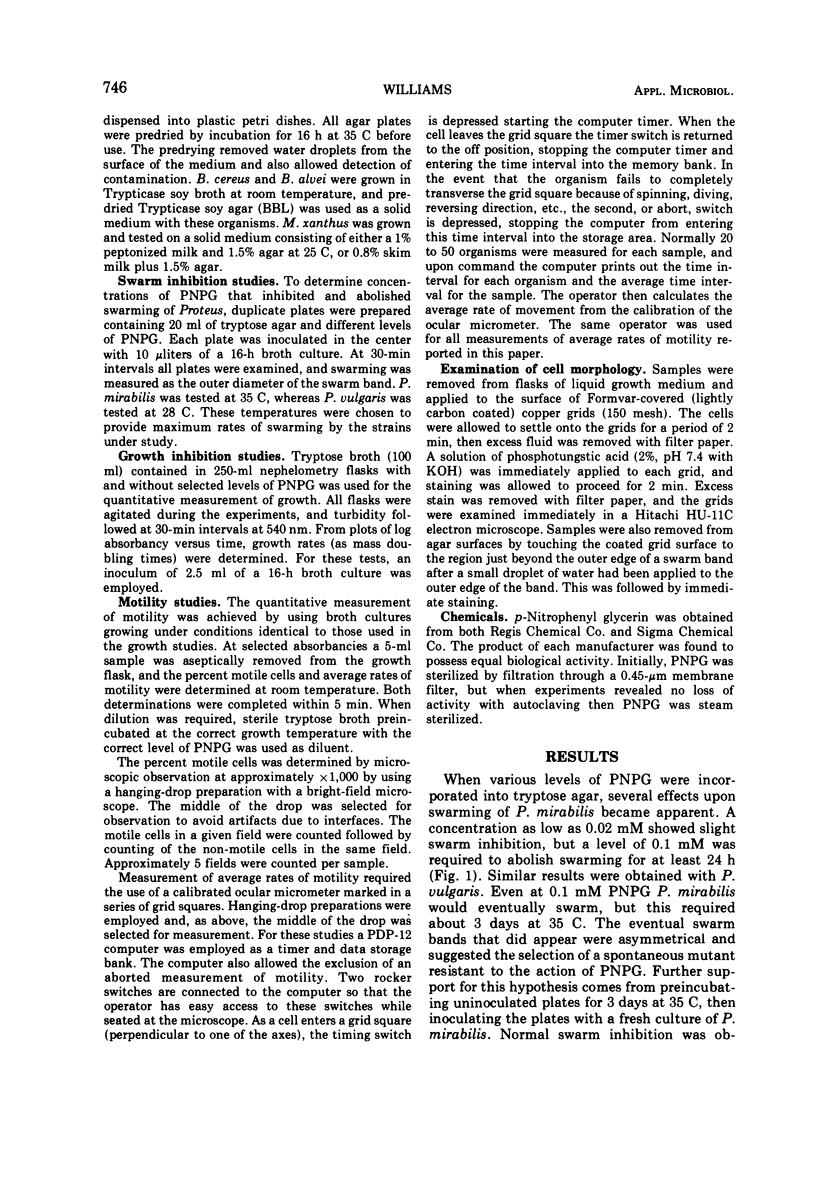
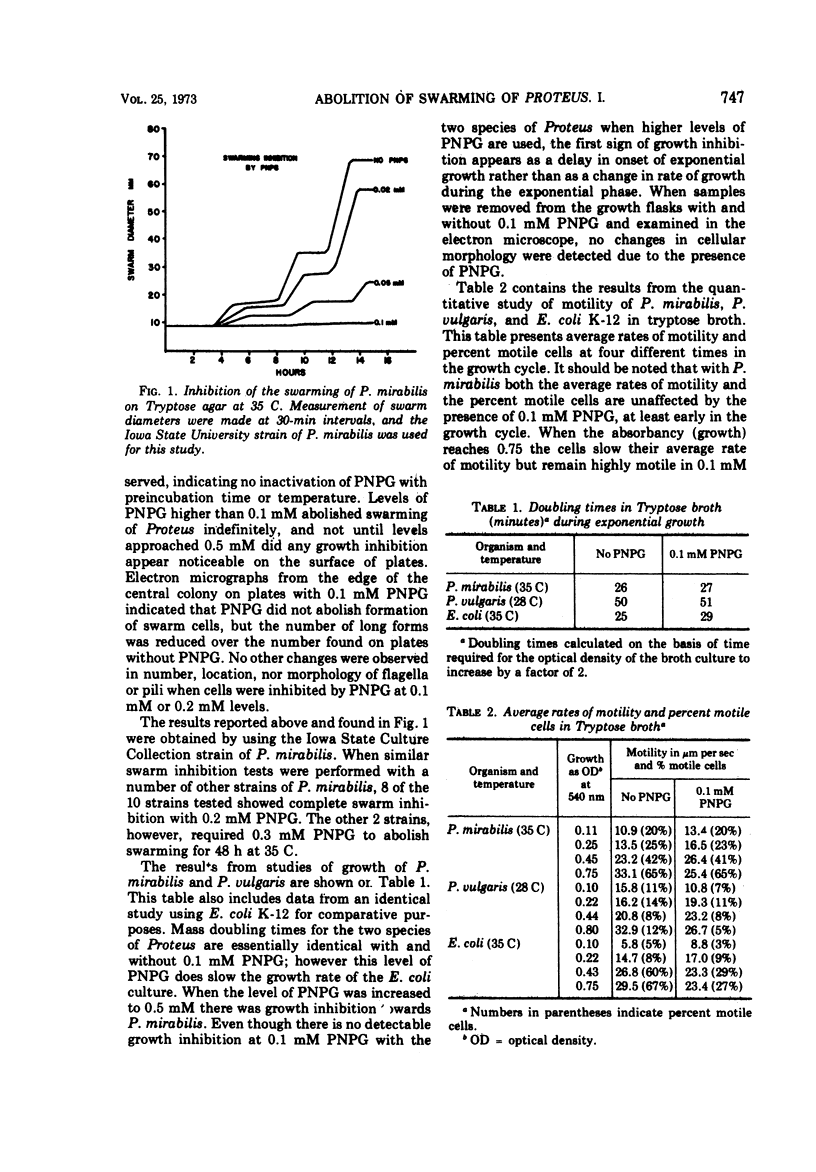
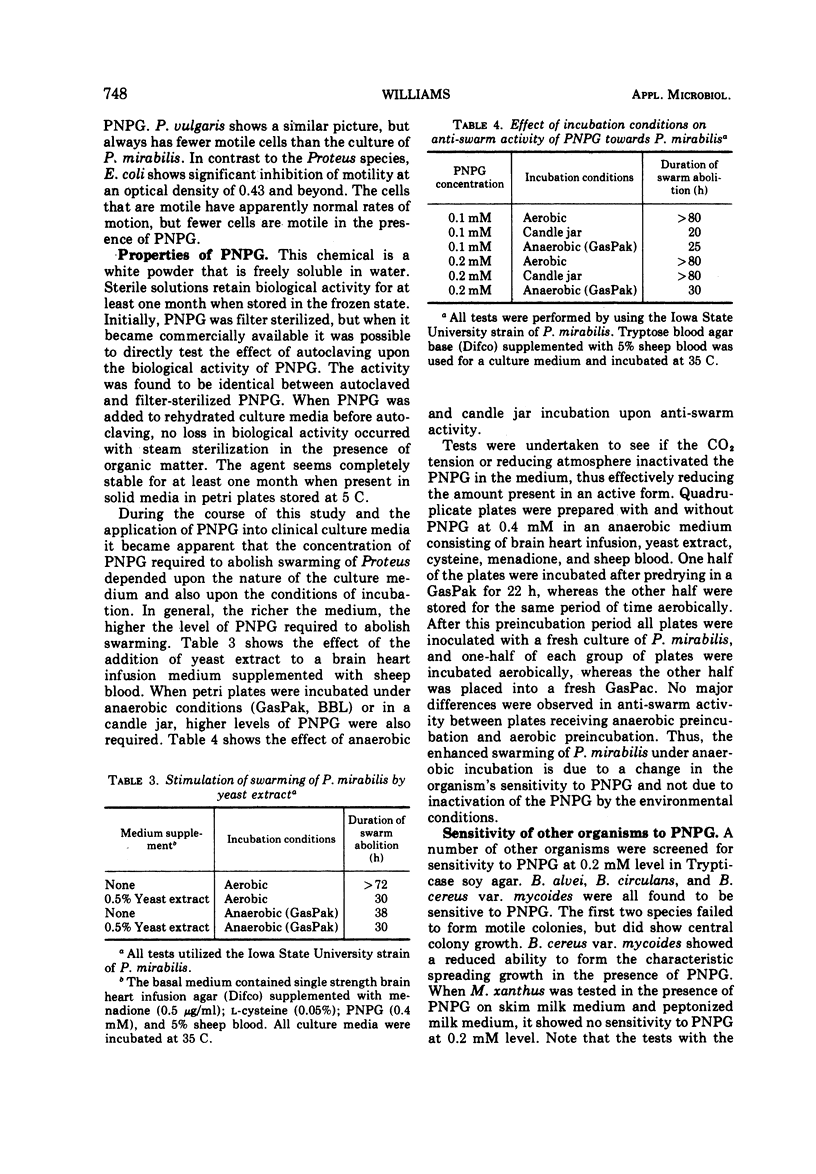
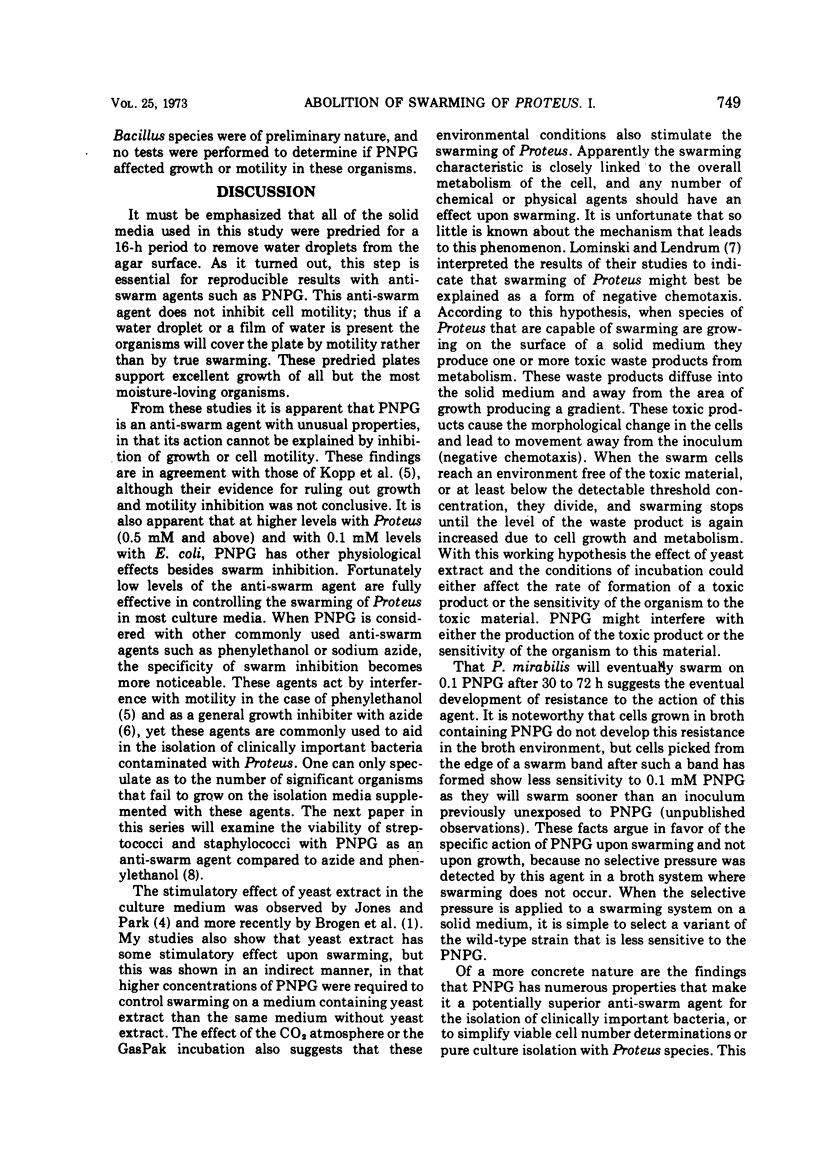
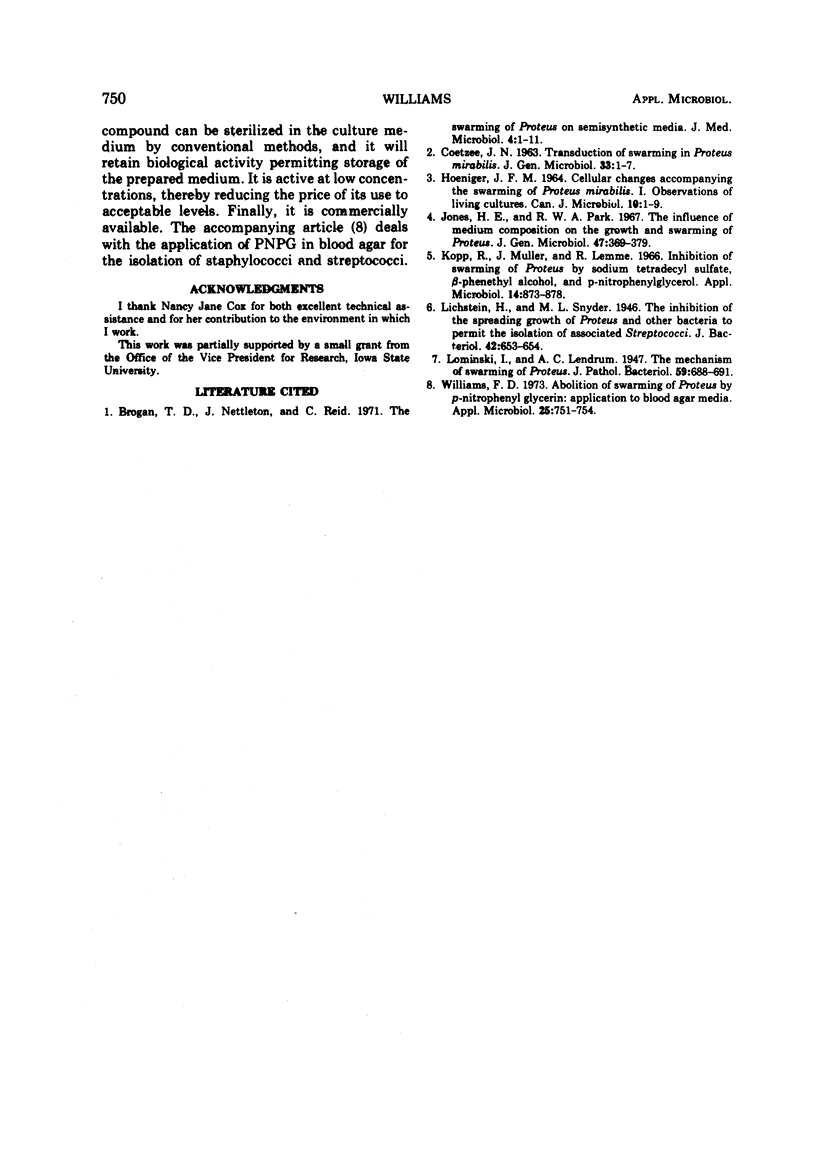
Selected References
These references are in PubMed. This may not be the complete list of references from this article.
- Brogan T. D., Nettleton J., Reid C. The swarming of proteus on semisynthetic media. J Med Microbiol. 1971 Feb;4(1):1–11. doi: 10.1099/00222615-4-1-1. [DOI] [PubMed] [Google Scholar]
- COETZEE J. N. TRANSDUCTION OF SWARMING IN PROTEUS MIRABILIS. J Gen Microbiol. 1963 Oct;33:1–7. doi: 10.1099/00221287-33-1-1. [DOI] [PubMed] [Google Scholar]
- HOENIGER J. F. CELLULAR CHANGES ACCOMPANYING THE SWARMING OF PROTEUS MIRABILIS. I. OBSERVATIONS OF LIVING CULTURES. Can J Microbiol. 1964 Feb;10:1–9. doi: 10.1139/m64-001. [DOI] [PubMed] [Google Scholar]
- Jones H. E., Park R. W. The influence of medium composition on the growth and swarming of Proteus. J Gen Microbiol. 1967 Jun;47(3):369–378. doi: 10.1099/00221287-47-3-369. [DOI] [PubMed] [Google Scholar]
- Kopp R., Müller J., Lemme R. Inhibition of Swarming of Proteus by Sodium Tetradecyl Sulfate, beta-Phenethyl Alcohol, and p-Nitrophenylglycerine. Appl Microbiol. 1966 Nov;14(6):873–878. doi: 10.1128/am.14.6.873-878.1966. [DOI] [PMC free article] [PubMed] [Google Scholar]
- Lichstein H. C., Snyder M. L. The Inhibition of the Spreading Growth of Proteus and other Bacteria to Permit the Isolation of Associated Streptococci. J Bacteriol. 1941 Nov;42(5):653–664. doi: 10.1128/jb.42.5.653-664.1941. [DOI] [PMC free article] [PubMed] [Google Scholar]
- Williams F. D. Abolition of swarming of Proteus by p-nitrophenyl glycerin: application to blood agar media. Appl Microbiol. 1973 May;25(5):751–754. doi: 10.1128/am.25.5.751-754.1973. [DOI] [PMC free article] [PubMed] [Google Scholar]


